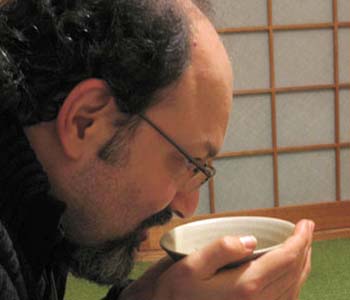Clare Palmer
Animal Ethics in Context
Columbia University Press
208 pages, 9 x 6 inches
ISBN 978 0231129046
ISBN 978 0231129053
Animals inhabit diverse environments: our homes, our settlements, agricultural land, the wild. Some animals never directly encounter human beings. Others are deliberately created by us. Do these different contexts and relations matter—morally?
Animal Ethics in Context argues that they do.
Debates about animal ethics have, to date, focused on whether and when benefits to humans can justify causing suffering or death to animals. These are, of course, important questions. But, as in human ethics, there’s much more to think about than when or whether harming can be justified. For instance, we also need to know when and whether we should help. And here, I argue, context is crucial.
Suppose there’s a storm followed by floods: must we assist wild animals in distress? Would it be wrong to leave them to suffer, if we could do something to help? I maintain that in these cases, there’s no obligation to help. What goes on in the wild is not our moral business.
But suppose, instead, human beings have damaged a habitat, causing similar animal distress? Then, I argue, we should do something to help, though what this help will turn out to be varies by context.
Additionally, billions of animals are not wild at all. We are responsible for their existence, we breed them in ways that suit us, and we keep them in environments we’ve created. This often makes them dependent on us and vulnerable to our neglect. I argue that creating dependent and vulnerable animals generates special caring responsibilities—responsibilities that we don’t have towards independent wild animals.
So, while there’s an important place for arguments about what not to do to animals, I open up a new area of ethical debate. This book argues for, and begins to develop, a richer, more complex account of our positive relations with the animals that surround us.

Creating dependent and vulnerable animals generates special caring responsibilities—responsibilities that we don’t have towards independent wild animals.
Animal Ethics in Context attempts to offer something both to theoretical debates in animal ethics and to more practical concerns about animal treatment.
Theoretically, animal ethicists have focused on the importance of particular capacities certain animals possess, such as being able to feel pain, or to have a “sense of self.” I don’t deny that these capacities are important. It seems very plausible that animals are morally significant because they can feel pain and discomfort, and their lives can therefore go worse or better for them. However, this focus on animals’ capacities has led, I suggest, to a rather restricted account of animal ethics.
It’s frequently argued that if animals share morally relevant capacities, such as the capacity to feel pain, then we have the same moral responsibilities to them. So whether an animal is a domestic house cat or a Scottish wildcat, we owe it the same moral concern.
In this book, I argue that animals’ capacities, while important, are not all that’s morally relevant. We need to take context and relation into account as well—just as we do in the human case.
It’s often argued in ethical theory that particular relations can underpin special moral obligations—relations such as creating a dependent child, or being causally implicated in harming others. If we create someone who needs us to thrive, or if we set back the interests of someone who would otherwise have flourished, we owe them something special that we don’t owe to people in general. I argue that some human-animal relations have a similar structure.
This argument, first, strikes me as important because it opens up a series of new questions about when it’s appropriate to help animals as well as when it’s permissible to harm them. In this sense, I see the book as just starting up a discussion that I hope others will take over, and that will eventually result in a broader, and more complex account of animal ethics.
Second, I’m trying to make an intervention into a long-running debate in environmental ethics. There’s been a longstanding rift between those whose ethical concern focuses on whole species and wild ecosystems, and those whose concern is for individual animals.
A flashpoint here is whether humans should act in the wild to relieve wild animal suffering. If you take the view that we have similar responsibilities towards animals with similar capacities, and you think we should give veterinary care to our pet dogs, then we should also give medical care to wild wolves. This seems to mandate action in the wild, in certain circumstances.
But environmental ethicists are very resistant to this view. They argue that this kind of action could compromise the health of ecosystems and undermine their wildness. My argument helps here by allowing for a distinction between the wild and domestic contexts. We have a special relationship to the dogs we’ve bred; so, we should give them medical care. That relationship, however, doesn’t hold with wild wolves; we have no obligation to help individual wolves at all. What we should do depends on the context, the history of human relations with the animals, whether humans were involved in causing the suffering, and so on. I’m hoping that the arguments in the book might contribute to mending some theoretical bridges between environmental ethicists and those concerned for individual animals.
Third, and finally, I’m also interested in the detail of particular contexts. I’ve tried to think through how the theoretical perspectives I’m developing might work out in practice by using a number of case studies. My idea was to bridge a gap between the development of a more abstract, theoretical position, and on-the-ground decisions about the treatment of animals. Actually, thinking through the cases had many uses: in particular, it made me rethink some of the theoretical claims I’d made. Indeed, I’m still not sure I’ve located all the right sorts of considerations we should take into account when making on-the ground decisions about how to treat particular animals.
I’d like a casual reader to start at the beginning, with the Introduction. That’s because in the Introduction, using recent media stories, I set up the key debate I pursue in the book.
I suggest that we have conflicting views about the kinds of responsibilities we have to animals. So, for instance, every year more than a million wildebeest migrate across Kenya’s Mara River. In the process, a number of them—sometimes thousands of them—drown. This mass migration, and the deaths that follow, has become a tourist spectacle. But no one argues that the tourists or media pundits standing by should intervene to help the drowning wildebeest, even if their suffering is intense or long lasting. We don’t say, in this case, that there’s a moral problem of “animal neglect.”
On the other hand, if domesticated animals are left to suffer—I cite a well-known case in the UK where a herd of domestic horses developed dehydration and untreated infections—there’s a moral outcry. We react differently to animal suffering in different contexts: the idea that we can have different responsibilities towards animals with whom we have different relationships is already widely accepted.
But we can also make sense of a competing idea: that beings who have similar capacities should be treated the same. The UK Vegetarian Society, for instance, has been running a campaign called The Butcher’s Cat, which has as its slogan “Why do we make pets out of some animals and mincemeat out of others?” (You can see the graphics for this at http://www.butcherscat.com/). The underlying idea here is that if we wouldn’t butcher Kitty the cat for Sunday lunch, then we shouldn’t butcher Daisy the cow either. Whatever you think about this particular case, it’s hard to resist the argument from consistency: if something’s owed to one animal, it’s owed to all animals that are relevantly the same. Yet this appears to run directly counter to the idea of contextual responsibility.
These conflicting ideas set up the debate in Animal Ethics in Context. I’m hoping that by encountering these cases in the Introduction, readers will see the pull of both ideas, and so be more sympathetic to the project of the book as a whole.

Human-induced climate change is likely to make some animals more vulnerable, improve the lives of others, and bring some animals into existence that would not otherwise have lived. How should we think about animal ethics in a warming world?
I see Animal Ethics in Context as a stepping-stone towards the development of a wide-ranging, relational approach to animal ethics that’s interested in human creation of animal vulnerability and dependence, as well as in claims about animal rights.
For instance, we can now deliberately create individual animals vulnerable to fatal diseases. What new ethical questions does this raise? Human-induced climate change is likely to make some animals more vulnerable, improve the lives of others, and bring some animals into existence that would not otherwise have lived. How should we think about animal ethics in a warming world?
My account is by no means complete or unproblematic—who better than the author to know this!—but my arguments provide a starting point for thinking through questions such as these.
My hope is, first, that others working on animal ethics will engage with the questions I raise, and will build their own contextual accounts using the tools I’ve begun to develop.
Second, I’d like the book to be useful to those actually making decisions about how to treat particular animals in concrete situations.
And third, I’d be delighted if the book opened up conversations about how we should treat the animals that live alongside us—in our homes and gardens or displaced by urban sprawl. These animals, living in what I call the “contact zone,” often fall below the radar both of those concerned about protecting the wild, and those engaged in debates about animal wellbeing in agriculture and scientific research. The contextual approach I’ve developed in the book is particularly well suited to raising the profile of the urban scavengers that surround us.




We don't put paywalls. We don't distract you with ads. We don't sell your data.
Please help to keep this running!